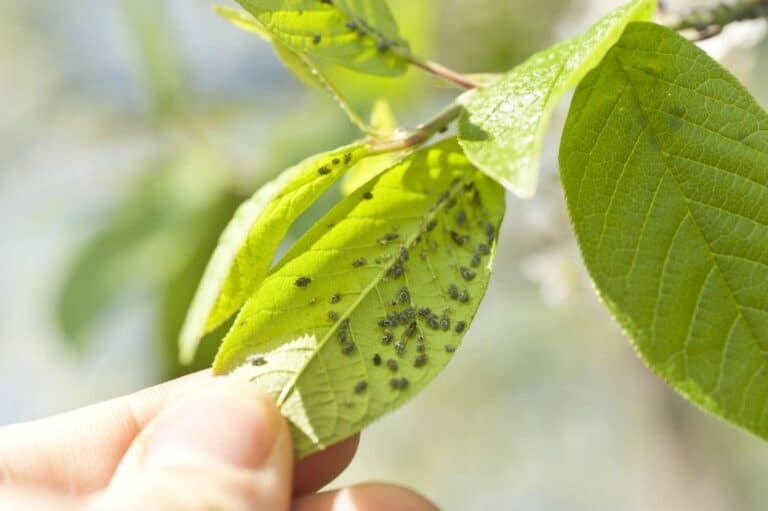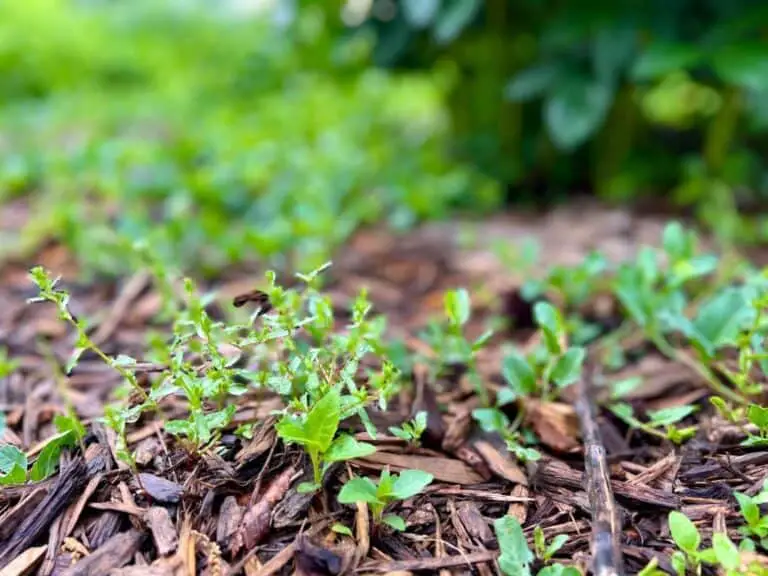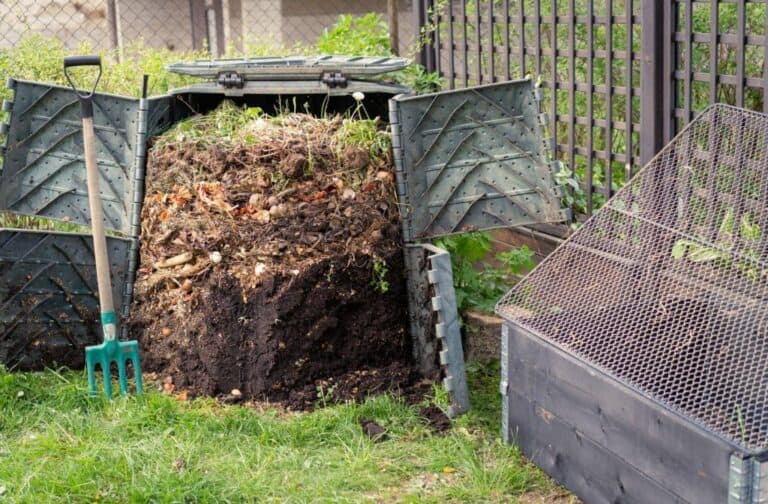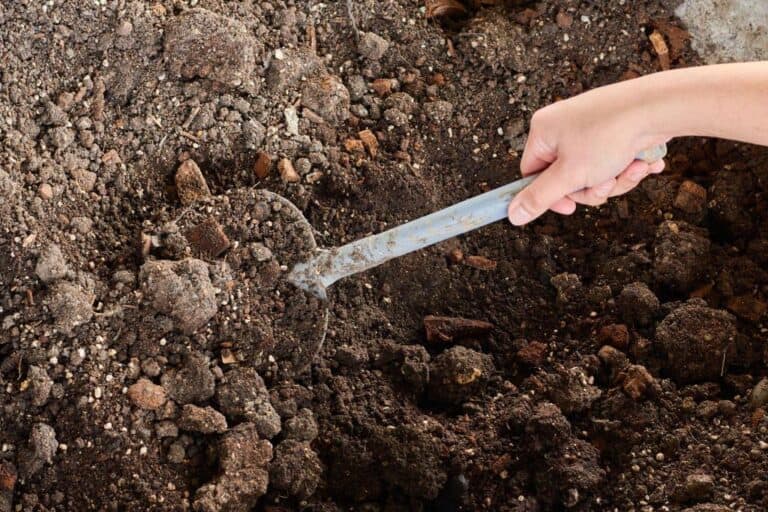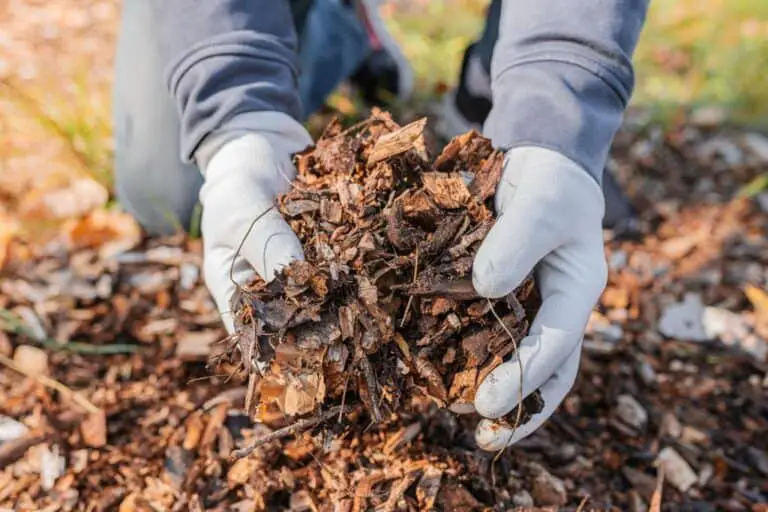Will Baking Soda Kill Fungus in Soil? Reviving Your Garden
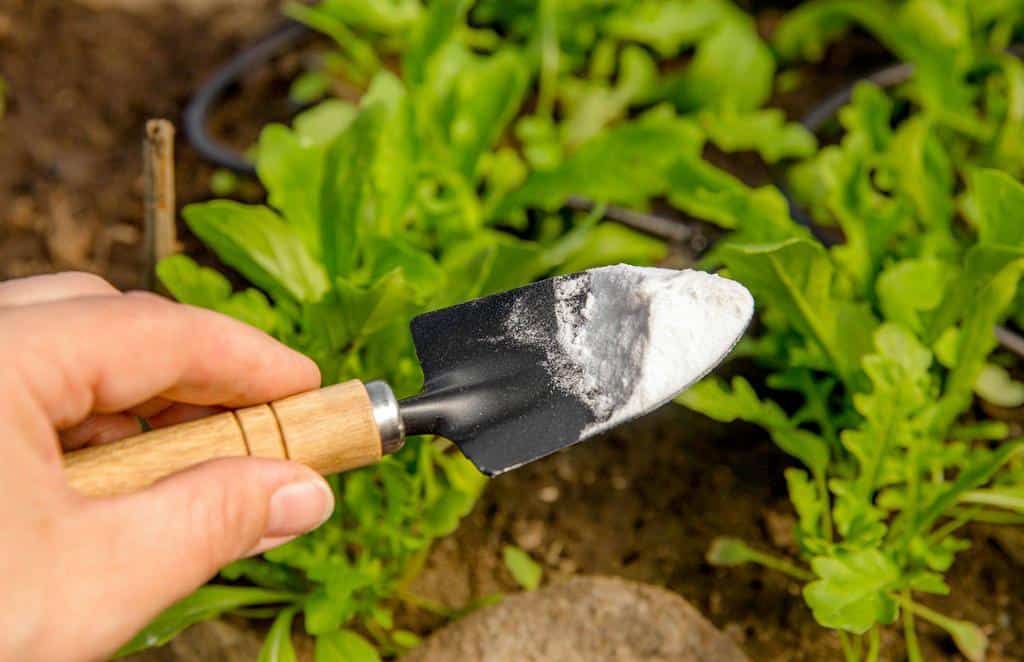
Gardening enthusiasts, listen up – your garden’s well-being might just hinge on an unexpected hero from your kitchen cabinet: baking soda. Yes, you read that right. The innocuous white powder that lends fluffiness to your pancakes and zing to your cookies could hold the key to rescuing your garden from the clutches of stubborn fungal infections.
Imagine vibrant blooms, thriving greens, and a revitalized outdoor sanctuary. But does baking soda truly possess the power to combat those pesky soil-borne fungi?
Baking soda (sodium bicarbonate) is an antifungal agent and can even kill some established forms of fungus. Research has shown that baking soda is effective at preventing and controlling fungi like powdery mildew and black spot
In this intriguing journey, we’ll delve into the science behind this household staple’s antifungal potential. We’ll unearth its benefits, lay out the best practices for application, and ensure you’re armed with the knowledge to revive your garden with a sprinkle of scientific magic. Get ready to unveil the secrets of baking soda and witness your garden’s triumphant comeback.
Understanding Soil Fungus and its Impact on Plants
Soil fungus, often unseen by the naked eye, can wreak havoc on your garden. These microorganisms thrive in damp conditions, targeting plant roots and impeding their ability to absorb nutrients. As a result, your once-vibrant plants might exhibit signs of distress, such as yellowing leaves, stunted growth, and wilting. Identifying the presence of soil-borne fungi is crucial for timely intervention.
Different types of soil-borne fungi exist, each with its own distinct characteristics. Some attack specific plant species, while others are more opportunistic. By understanding the nature of these fungi, gardeners can better tailor their approach to combating them effectively.
Benefits of Baking Soda in Gardening
Enter baking soda, a household staple that has found its way into the world of gardening. Baking soda, or sodium bicarbonate, is renowned for its versatility, from baking to cleaning. However, its potential in gardening has also been recognized. This white crystalline powder can do more than leaven your cakes; it might just be a solution to your soil fungus woes.
The properties of baking soda extend beyond the kitchen. Gardeners have experimented with baking soda to combat various garden challenges, including fungal infections. One of its notable effects is its influence on soil pH. By slightly altering the pH level, baking soda creates an environment that inhibits the growth of certain fungi. This alteration, in turn, can enhance plant resilience and nutrient absorption.
When considering the use of baking soda in your garden, several benefits come to light:
1. Natural Antifungal Properties
Baking soda’s antifungal properties are a gentle alternative to harsh chemical fungicides. It targets specific fungal strains without introducing harmful toxins into your garden’s ecosystem.
2. Affordability and Accessibility
Unlike specialized fungicides, baking soda is readily available and budget-friendly. This makes it an attractive option for gardeners seeking effective yet economical solutions.
3. Versatility
Beyond its antifungal role, baking soda offers versatility in gardening. It can be used for pest control, as a weed killer in driveway cracks, and to deter gnawing rodents.
4. Minimal Environmental Impact
Opting for baking soda aligns with eco-friendly gardening practices. Its biodegradability ensures that it won’t leave a lasting footprint on the environment.
The Science Behind Baking Soda’s Antifungal Potential
Baking soda, scientifically known as sodium bicarbonate, isn’t just for your baking escapades. Its multifaceted properties extend to the realm of gardening. While not a fungicide per se, baking soda’s alkaline nature creates an environment that discourages the growth of certain fungal spores.
Fungi often thrive in acidic environments, making your garden soil a potential breeding ground. By raising the pH level slightly, baking soda can inhibit the development of fungi that contribute to issues like root rot and mildew.
However, it’s important to note that baking soda isn’t a one-size-fits-all solution. Some plants prefer acidic soil, and altering the pH indiscriminately can harm them. Therefore, strategic application is key to harnessing baking soda’s antifungal potential while preserving your garden’s overall health.
Some Common Fungal Diseases in Plants

Fungal diseases are a common problem for plants and can cause significant damage to crops and gardens. Fungi are responsible for most plant diseases, and they damage plants by killing cells and causing plant stress.
Wind and water splashes are two ways that fungi can spread. It can spread through the movement of contaminated soil, animals, workers, machinery, tools, seedlings, and other plant material.
Here are some common fungal diseases in plants:
- Powdery mildew: This disease is caused by a fungus and affects a number of plants, including lilacs, apples, grapes, cucumbers, peas, phlox, daisies, and roses. It leaves a telltale white, dusty coating on leaves, stems, and flowers.
- Black spot: It causes black spots to appear on the leaves, which eventually turn yellow and fall off.
- Downy mildew: This disease is caused by a fungus and affects a wide range of vegetables. It causes yellow patches on the leaves, which eventually turn brown and die.
- Rust: This fungus disease is easy to spot because it forms rusty spots on leaves and sometimes stems. There are many types of rust that can attack plants such as hollyhocks.
- Wilt: This disease is caused by a soil-borne fungus and affects ornamental and edible plants, including dianthus, beans, tomatoes, peas, and asparagus. The disease causes wilted leaves and stunted plants, as well as root rot and sometimes blackened stem rot.
- Leaf spot: It causes brown or black spots to appear on the leaves, which can eventually kill the plant.
- Blight: This fungal infection causes the leaves to turn brown and die, and can eventually kill the plant.
- Anthracnose: This disease is caused by a fungus and affects many varieties of plants and vegetables, including tomatoes, cucumbers, beans, and fruits like melon. It is characterized by small, sunken spots that appear on fruits and pods, which have pinkish sores in the center.
- Clubroot: It affects brassicas such as broccoli, cauliflower, and cabbage. It causes the roots to become swollen and misshapen, which can eventually kill the plant.
- Damping-off and root rot: These diseases are caused by fungi and affect seedlings. They cause the seedlings to wilt and die, and can be a problem in damp or poorly drained soil.
Baking Soda as a Fungicide: Mechanisms of Action
But how does baking soda combat soil fungus? The science behind it is fascinating. Baking soda, when applied to soil, interacts with fungal cell structures. It disrupts the cell walls of certain fungi, weakening their integrity and inhibiting their growth. This interference is a key mechanism by which baking soda acts as a natural fungicide.
Scientific studies have lent credence to baking soda’s antifungal properties. Researchers have conducted experiments to observe its effects on soil-borne fungi. These studies have demonstrated promising results, showing improved plant growth and fungal suppression in treated soil. However, like any gardening approach, the effectiveness of baking soda can vary based on factors such as soil type, plant species, and environmental conditions.
Best Practices for Applying Baking Soda in Your Garden
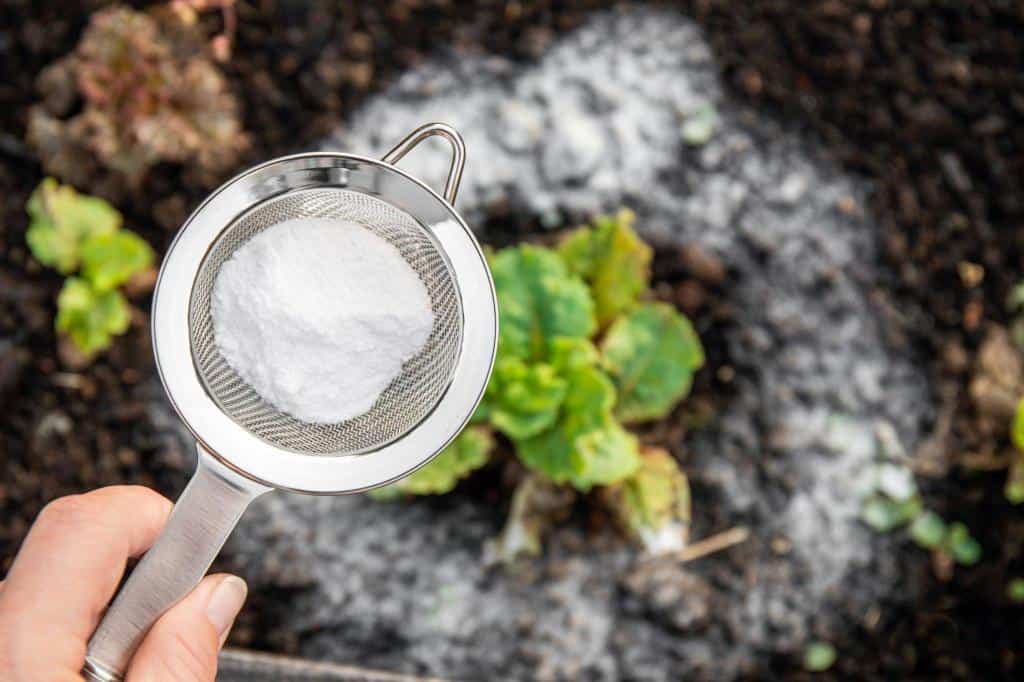
While baking soda holds promise as a garden revitalizer, its application requires a delicate touch. Here’s a step-by-step guide to maximizing its benefits:
Step 1: Identify the Problem
Before reaching for the baking soda, identify the specific fungal issue affecting your garden. Different fungi require different interventions, and misdiagnosing the problem can worsen the situation.
Step 2: Choose the Right Plants
Not all plants will benefit from baking soda applications. Acid-loving plants like azaleas and blueberries may suffer if the soil’s pH is raised. Focus your baking soda efforts on plants that thrive in a slightly alkaline environment.
Step 3: Test the Soil pH
Testing your garden’s soil pH is crucial. Home testing kits are widely available and offer a quick assessment of your soil’s acidity. Aim for a pH level around 7, which indicates neutrality.
Step 4: Prepare the Baking Soda Solution
Create a baking soda solution by mixing 1 teaspoon of baking soda with a quart of water. Stir until the baking soda is dissolved. This mild solution will help prevent shock to your plants’ root systems.
| Ingredient | Measurement |
| Baking Soda | 1 teaspoon |
| Water | 1 quart |
Step 5: Apply the Solution
Gently water the affected soil with the baking soda solution. Ensure even distribution while avoiding excessive drenching. This process can be repeated every two weeks as necessary.
Step 6: Monitor and Adjust
Keep a close eye on your garden’s response to the treatment. Wilting, browning, or other signs of distress could indicate an adverse reaction. If negative effects occur, discontinue use immediately.
Potential Benefits and Drawbacks of Baking Soda Treatment
Using baking soda as a soil fungicide can yield positive results, but it’s essential to weigh its advantages against potential drawbacks.
Positive outcomes:
- Fungal suppression: Baking soda disrupts fungal growth and can alleviate soil-borne infections.
- Improved plant health: By creating an inhospitable environment for fungi, plants can thrive.
Potential negative effects:
- Soil composition: Excessive baking soda can disrupt soil structure and composition.
- Nutrient availability: Altered pH can hinder nutrient uptake by plants.
- Microbial balance: Beneficial soil microorganisms may be impacted.
Balancing pros and cons:
- Applying baking soda cautiously can harness its benefits without causing harm.
- Combining baking soda with organic matter can mitigate potential downsides.
Alternatives to Baking Soda: Other Natural Fungicides and Preventive Measures
While baking soda offers a natural solution, alternatives exist to address soil-borne diseases and prevent fungal issues.
Introduction to alternatives:
- Neem oil: Derived from neem trees, neem oil has antifungal properties.
- Copper-based products: Copper fungicides are effective against various fungal infections.
- Compost teas: Nutrient-rich compost teas can boost plant health and disease resistance.
Preventive measures:
- Good sanitation: Regularly clean garden tools and remove infected plant debris.
- Proper spacing: Adequate spacing between plants promotes airflow, reducing humidity.
- Mulching: Organic mulch can create a barrier against soil-borne fungi.
Conclusion
In the quest to revive your garden from the clutches of fungal infections, baking soda emerges as a versatile and eco-friendly option. Its natural antifungal properties, combined with its accessibility and minimal environmental impact, make it a contender in your arsenal of gardening tools. However, caution and precision are essential. By understanding your garden’s specific needs, testing soil pH, and applying the baking soda solution judiciously, you can tip the scales in favor of healthier, more vibrant plants.
So, will baking soda kill fungus in soil? The answer is a nuanced one. While it won’t eradicate all fungi, it can play a valuable role in managing certain fungal issues. As with any gardening technique, knowledge and adaptability are your best allies. Armed with a dash of scientific insight and a sprinkle of baking soda, you’re well on your way to breathing new life into your garden sanctuary.
FAQs on Baking Soda’s Antifungal Properties in Gardens
Is baking soda safe for all types of plants?
While baking soda can help control soil fungus, some plants might be more sensitive to pH changes. It’s recommended to research your specific plant species before using baking soda.
Can baking soda completely eliminate soil fungal infections?
Baking soda can be effective in suppressing soil-borne fungi, but complete eradication might require a combination of treatments and preventative measures.
How often should I apply baking soda to my garden?
The frequency of application depends on factors like the severity of the fungus and weather conditions. Generally, it’s advisable to start with one or two treatments and monitor the results.
Can I use baking soda as a preventive measure even if my garden doesn’t have fungal issues?
Using baking soda as a preventive measure can alter soil pH and potentially negatively impact plant health. It’s better to focus on maintaining good soil health and implementing proper gardening practices.
Is baking soda effective against soil-borne fungal infections?
Baking soda’s alkaline nature can hinder the growth of certain fungi by altering soil pH. While not a fungicide, it shows promise in managing some fungal issues.
Are there other natural alternatives to baking soda for treating soil fungus?
Yes, neem oil, hydrogen peroxide, and compost tea are among the natural options. Each has its strengths and limitations, so research and experiment accordingly.

